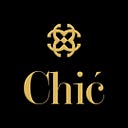Historical Evolution of Luxury Fashion
Tracing the roots of luxury fashion from ancient civilizations to the present-day
The history of luxury fashion is a fascinating journey that intertwines with societal changes, technological advancements, and the evolution of aesthetics. Here’s a brief overview of the historical evolution of luxury fashion:
Ancient Civilizations (circa 3000 BC — 500 AD):
In ancient Egypt, clothing was a sign of social status. Pharaohs and nobles wore intricately designed garments made from fine linen.
The Romans and Greeks also placed importance on clothing. Togas made from expensive materials, like silk from China, were reserved for the elite.
Medieval Times (500 AD — 1500 AD):
In Europe, sumptuary laws dictated what each class could wear, ensuring that luxury items were reserved for the elite.
Rich fabrics like velvet, silk, and fur became popular among the nobility.
Renaissance (14th century — 17th century):
The Renaissance era marked a renewed interest in arts, science, and fashion. Wealthy patrons commissioned artists to design opulent garments.
The rise of trade and commerce led to the proliferation of luxury fabrics and dyes.
Industrial Revolution (18th century — 19th century):
The invention of the sewing machine and other technological advancements made mass production of clothing possible.
However, bespoke tailoring and handcrafted garments still remained a luxury.
Early 20th Century:
The rise of haute couture in Paris, led by designers like Coco Chanel and Christian Dior, revolutionized luxury fashion.
Hollywood also played a pivotal role in influencing fashion trends.
Post World War II Era (1945–1980s):
The spread of consumer culture and the rise of fashion magazines like Vogue popularized luxury fashion brands.
Designers like Yves Saint Laurent and Givenchy became household names.
Late 20th Century — Early 21st Century:
The rise of ready-to-wear collections made luxury fashion more accessible.
Globalization, the internet, and e-commerce transformed the luxury market, making it more global and interconnected.
The emergence of “fast fashion” provided affordable alternatives, leading luxury brands to emphasize their heritage, craftsmanship, and exclusivity.
Recent Trends (2000s — Present):
Sustainability and ethical practices have become significant concerns, with many luxury brands adapting to eco-friendly materials and transparent supply chains.
The rise of digital influencers and social media platforms, particularly Instagram, has reshaped the marketing strategies of luxury brands.
The blending of streetwear with luxury, exemplified by collaborations like Louis Vuitton x Supreme, has blurred the lines between high fashion and street culture.
Throughout history, luxury fashion has been a reflection of societal changes, technological advancements, and evolving tastes. From the opulent garments of ancient civilizations to the digital-driven trends of today, luxury fashion continues to be a barometer of culture and society.
